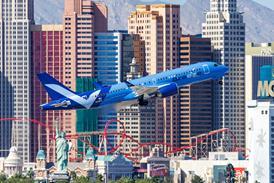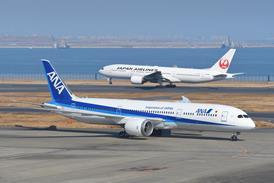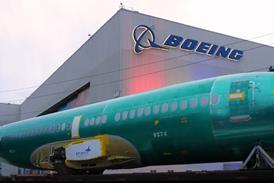Gulf Air's loss has been Emirates' gain, and much of the former's recent decline in fortunes can be put down to the latter's cunning success. Since its creation in 1985, Dubai's "flag carrier" has gone from strength to strength, as the emirate and the airline have driven each other forward.
Dubai is now one of the world's leading trading posts and also a major holiday destination, while Emirates is on its way to being one of the biggest all-widebody aircraft operators, as it serves the needs of its home port and creates a major international transit hub. It is also an important customer for the world's major aerospace suppliers.
The airline operates 46 aircraft - one Airbus A310, 26 A330-200s, nine Boeing 777-200/200ERs and 10 777-300s. It has firm orders for 33 aircraft - three A330s, six A340-500s, 22 A380s and two 777-300s. Despite the slowdown and uncertainties of the past 18 months, Emirates is set to place the year's biggest orders at the Paris air show in June when it concludes multi-billion dollar deals for more A340s, A380s and 777s.
This expansion is driven by the airline's need to grow to a fleet of "110 to 140 aircraft by 2013", says Emirates chief director (airline) Tim Clark. The airline plans to replace part of its relatively new fleet of A330s in the medium term, because they are no longer big enough for a number of routes.
Talks have taken place to discuss purchases with both manufacturers for over 18 months. However, the planned acquisition was expanded last year following the decree by Dubai's crown prince Sheikh Mohammed Bin Rashid Al-Maktoum that he wants the emirate to be hosting 15 million visitors a year within 10 years, compared to the current 3 to 4 million. This factor, plus the ambitions Emirates has for its hub, is driving the airline's fleet plan and the expansion of Dubai International Airport, which will be able to handle 80 million passengers a year by 2008.
Clark describes 2002 as the airline's "best financial year ever". Traffic grew by 26% and capacity by 27%. He adds that yields improved by 2% last year, when they were expected to decline. Growth is expected to continue at similar levels in 2003, with traffic increasing to around 10.5 million passengers.
By the end of the year the airline will have 56 aircraft in service, including the first A340-500s, which will be used to undertake the next phase of Emirates' expansion. The ultra-long-range quads will enable the airline to fly direct services to Australia and inaugurate flights to the USA. Dubai-Sydney, which is served via Singapore, will get direct flights from October, while the first USA destination - New York Kennedy - will be introduced in April next year with San Francisco following in June.
The new A340s will have a spacious three-class 258-seat layout with new cabin specification. The interiors of the existing A330/777 fleet will be upgraded and Clark is confident that the offering will "re-benchmark first class".
Clark sees Dubai's central location between the Americas and Asia as being perfect to enable it to expand into the world's leading international hub. "Three billion people are within striking distance of Dubai to the east," he says, adding that there are "lots of opportunities" for more African connections, particularly in the west and central part of the continent.
Emirates' ratio of origin and destination (O&D) to transit traffic mix is seasonal, being as high as 60:40 during key events such as the Dubai shopping festival and reversing at other times of the year. This compares to the 30:70 O&D: transit ratio originally planned for the airline at its creation, and reflects the growing importance of Dubai as a destination in its own right.
The airline operates a two-wave feed system at Dubai, but Clark says a third wave will eventually be needed to cope with the increased traffic as the long-haul network expands.
The urgent need for more long-haul capacity is driving the fleet planning. Capacity will get a major boost from October 2006, when the first of 20 passenger A380s are due to arrive. Initial destinations for these 550-seaters will include key hubs in Asia, Europe and the USA.
By then, the A380 order is likely to have been increased further as part of the major purchase that is expected to be finalised by June. The deal will also include at least 10 extended-range, 310-seat A340-600s, which will enable capacity on non-stop Dubai-Australia services to be increased, as well as more A340-500s. Boeing is also being rewarded by a deal for at least 25 777-300s, almost certainly including the longer-range -300ER version.
Source: Flight International























